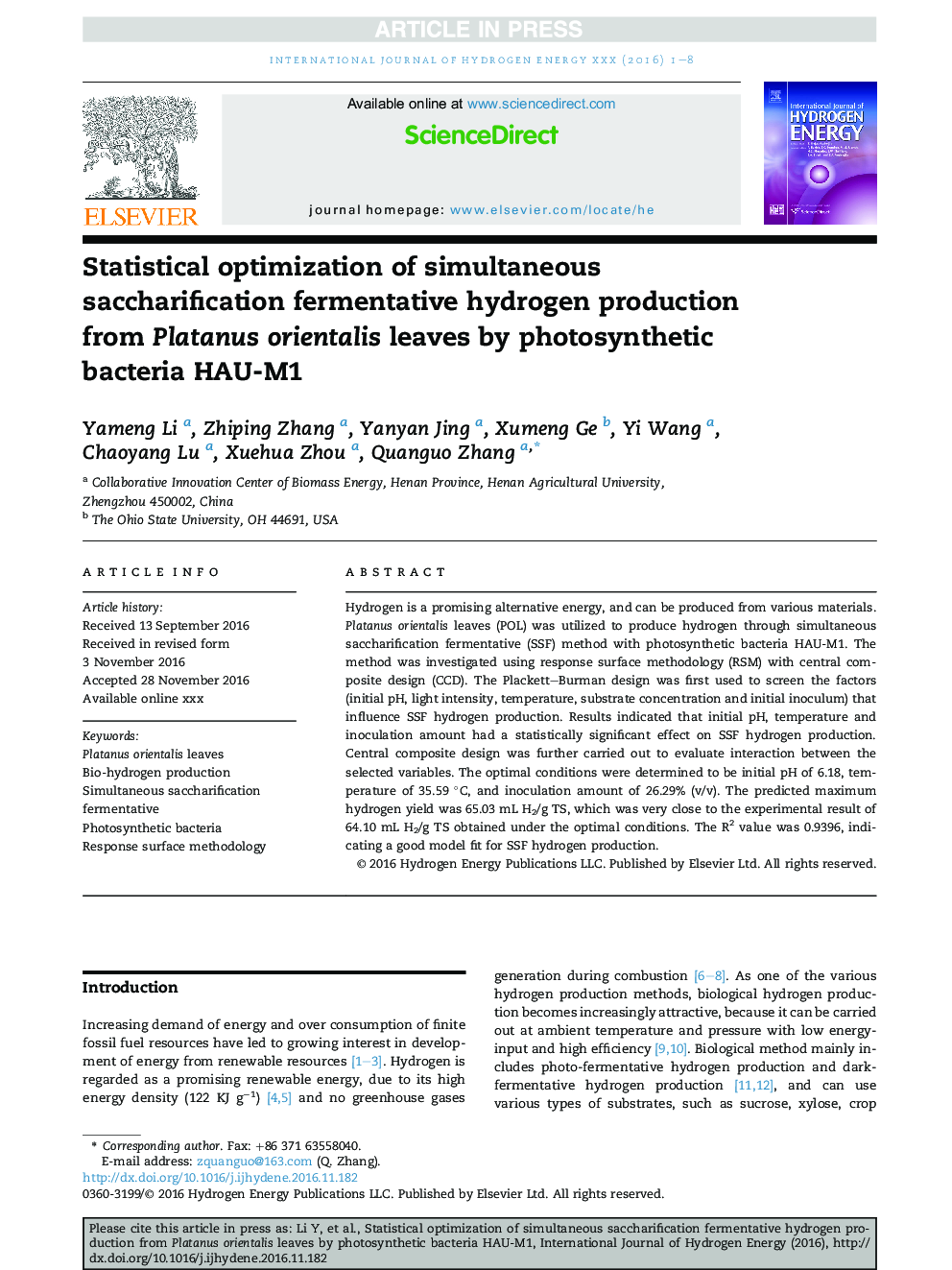| Article ID | Journal | Published Year | Pages | File Type |
|---|---|---|---|---|
| 5146787 | International Journal of Hydrogen Energy | 2017 | 8 Pages |
Abstract
Hydrogen is a promising alternative energy, and can be produced from various materials. Platanus orientalis leaves (POL) was utilized to produce hydrogen through simultaneous saccharification fermentative (SSF) method with photosynthetic bacteria HAU-M1. The method was investigated using response surface methodology (RSM) with central composite design (CCD). The Plackett-Burman design was first used to screen the factors (initial pH, light intensity, temperature, substrate concentration and initial inoculum) that influence SSF hydrogen production. Results indicated that initial pH, temperature and inoculation amount had a statistically significant effect on SSF hydrogen production. Central composite design was further carried out to evaluate interaction between the selected variables. The optimal conditions were determined to be initial pH of 6.18, temperature of 35.59 °C, and inoculation amount of 26.29% (v/v). The predicted maximum hydrogen yield was 65.03 mL H2/g TS, which was very close to the experimental result of 64.10 mL H2/g TS obtained under the optimal conditions. The R2 value was 0.9396, indicating a good model fit for SSF hydrogen production.
Related Topics
Physical Sciences and Engineering
Chemistry
Electrochemistry
Authors
Yameng Li, Zhiping Zhang, Yanyan Jing, Xumeng Ge, Yi Wang, Chaoyang Lu, Xuehua Zhou, Quanguo Zhang,
